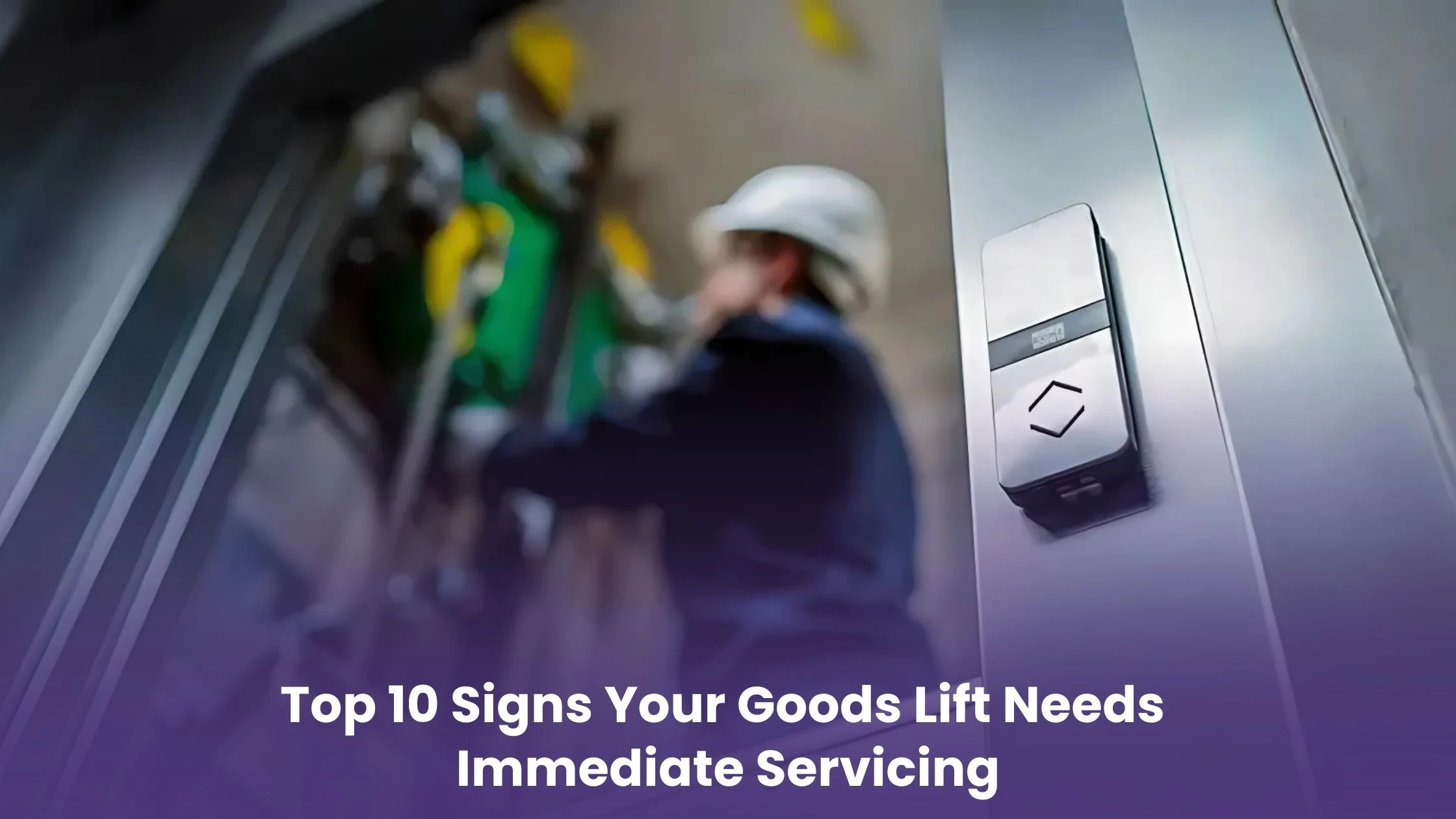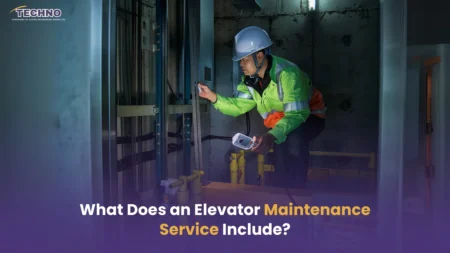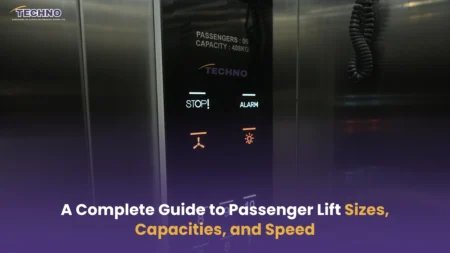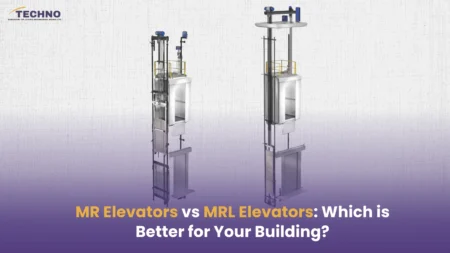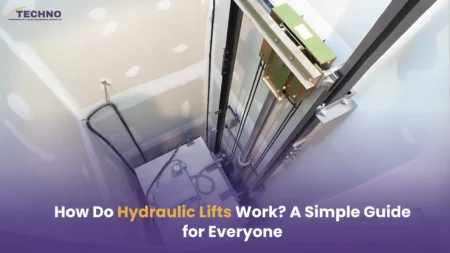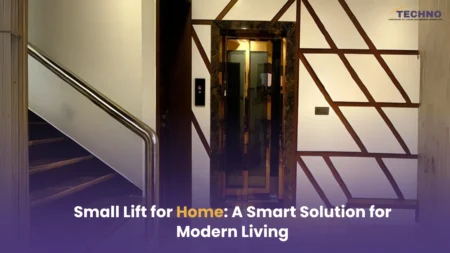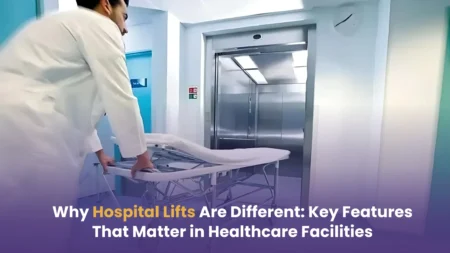For good operational excellence, an Industrial Goods Lift is a necessity in high-level industrial environments. When it comes to operating a warehouse, factory, or logistics center, trusting the industrial lifts you rely on is critical to safety, ensuring maximum throughput and maximum overall efficiency. But whether your lifting systems might be viewed as modern technologies, the fact still remains that quality can never be derived from regular maintenance alone; quality comes from keeping up with modern automation, fast-changing safety codes, and sophisticated load balancing. Elevator maintenance has to be proactive and streamlined while fitting delicately into your long-term policy vision.
The Contribution of Goods Lift Automation in Today’s Material Handling Systems
The days when manual operation was the only means of movement of material are gone. Automation has changed the way we think about a material handling lift; it is no longer just about moving material, but doing it effectively, speedily, and intelligently.
Automated systems provide:
- Consistency of load management: it highly reduces human error, especially in high-throughput environments.
- Speed advantages: automation leads to reduced idle time between load cycles.
- Error sensing: automatic safety interlocks and intelligent feedback loops, which effectively remove misuse or overload.
These benefits explain why automated lifts underlie smart factories and hyper-efficient logistics centers.
Types of Industrial Goods Lifts and Their Functions
Not all lifting needs are alike, and not all lifts are alike.
Here is a list of the most common industrial goods lifts as they relate to the application:
- Vertical Reciprocating Conveyors (VRCs): These are the best option when moving materials up or down, and can handle some pretty heavy loads, so ideal when moving heavy material vertically between floors in warehouses and industrial units.
- Scissor Lifts: Are the preferred type of lift. Ideal when you need to do some controlled elevation in assembly lines or maintenance operations.
- Hydraulic Goods Lifts: These lifts are renowned for their load-bearing capabilities, especially in terms of load capacity. Especially common in auto-manufacturing and manufacturing in general.
- Traction-Based Freight Elevators: Ideal for high-rise buildings that require faster operation cycling because usually high-speed lifts will only service on level or two levels of a building.
Knowing which lift is best suited for your facility will help to lessen wear and tear on the lift or lifts, help to minimize downtime, and guarantee an effective long-term lifecycle of the lift.
Combining IoT and Smart Sensors in Goods Lifts
Elevator technology has come a long way from just motors and gears. The automated industrial lift of today can self-diagnose, predict faults, and notify service teams before breaking down.
Smart sensors and IoT mean:
- Real-time diagnostics: Capture vibration, load, and temperature to analyze performance.
- Predictive analytics: Offer AI-based insight as to when and where a component may fail.
- Remote alerts: Allow maintenance teams to receive immediate fault notifications via connected platforms.
IoT systems not only improve minimal uptime, but they also reduce maintenance costs during a lift’s lifetime.
Energy Efficiency and Performance Enhancements
A modern warehouse lift system should not just be effective, but it should also use less energy.
The best ways to improve energy efficiency include:
- Variable frequency drives (VFDs): VFDs adjust lifting speed based on actual loading, which will conserve energy and reduce wear and tear on the mechanical components.
- LED-based indicators and smart lighting: Remove unwanted energy waste.
- Regen drives: Capture braking energy that can be fed back into the building energy grid.
These improvements are justifiable by the fact that they will eventually pay for themselves by reducing ongoing power bills and extending vehicle and/or system life expectancy.
Safety Standards and Load Handling Capabilities
Every cargo lift system is subject to strict safety standards. However, premium systems go beyond this.
Some key safety best practices are:
- Overload detection systems should prevent elevation if the lift exceeds its rated load.
- Emergency stop and manual override systems should provide safety for failure of sensors or software systems.
- No slip flooring and structural wall reinforcements protect the personnel and cargo movement during vertical travel.
Maintenance teams should frequently test all safety locking systems, including braking systems and emergency communications systems, to comply with IS codes and international standards.
Remote Monitoring and Predictive Maintenance
Routine inspections are important, but innovation comes with predictive maintenance found in remote monitoring.
How:
- Data-driven: Service schedules developed based on actual usage patterns of your cargo lifts.
- Reduced unplanned downtimes: Minor faults are fixed before they grow into bigger problems.
- Digital service logs: Central data is easier to track and comply with safe rules, guidelines, and regulations.
As operational 24/7 facilities become the norm, predictive maintenance is not an option.
Industry-Specific Modifications
Every industry has unique needs, and these need to be factored into the elevator design.
- For pharmaceutical units, that elevator is likely to be internally made from sterile stainless steel for cleaning and purity purposes.
- For cold storage warehousing, having insulated and condensation-controlled lifts is important.
- For industrial factories, heavy-duty goods lifts with tough interior surfaces and shock-absorbing platforms will be required.
The Customization of Goods Lift systems makes them safer, more productive, and easier to service as needed. Choosing the wrong lift system, or a lift system that is generic, becomes an ongoing liability.
Automated Lift for Factories and Warehouses
Let’s not underplay the real advantages of automated lifting systems in the warehouse and factory. While there is a scale of advantages, from small store warehouses to multi-floor factories, the advantages are real:
- Increased Throughput: Automated lifting systems result in less waiting time and quicker material handling
- Labour Savings: Automated lifters significantly reduce human intervention when performing dangerous, unsafe, and repetitive lifting tasks.
- Improved Safety: Less hands-on material handling means less workplace injury.
Even for manual lifting cases, these systems mean that hand lifting remains safe, while making the job easier
They contribute to an improved atmosphere by removing the most physically demanding and, ultimately, frivolous elements of industrial-based work.
Cost vs. ROI of Automated Goods Lifts
The initial cost of an automated freight elevator can be overwhelming, but the end results are worth every rupee spent.
Let’s take a look at some factors:
- Reduced labor costs
- Downtime
- Accidents
- Longevity of equipment
- Energy savings over time
Most companies find that in just a 5-7 year period, there is more than the return on investment. An industrial goods lift that runs without moving for years on end is an investment, not an ongoing cost.
The Future Directions of Industry Equipment Lift Technology and Automation
We are entering an age where lifting equipment for industry is becoming more intelligent, safe, and sustainable.
Trends include:
- AI-driven load balancing; Lifts driven by energy consumption work load balancing in real time
- Edge computing: Decision making is instantaneously done at the level of the lift controller
- Green materials: Lightweight, recyclable materials reduce structural load and carbon footprint
In a short period of time, lifts for factories will understand the integration at the level of the whole central building management system, pertaining to HVAC, lighting, and possibly security.
Types of Goods Lifts & Their Ideal Industries

Closing Thoughts:
Elevators are not just vertical transportation units any longer. They are infrastructure. A well-maintained industrial goods lift could be the difference between a facility that operates smoothly and one that feels as though its operations are plagued with bottlenecks.
If you’re installing a new lift, retrofitting an old lift, or simply looking for a complete management system of automation, keep this in mind: proactive lift maintenance is not only about preventing the breakdown of your lift. Proactive lift maintenance is about enabling performance, enabling safety, and enabling returns for years to come.
At Techno Elevators, we do not only build elevators, but we also build vertical corridors to extend industrial efficiency.
Know More About Goods Elevators
In a busy commercial environment, a goods lift is not just another piece of machinery, it is an important link in your …
We live in an era where even one-day delivery feels delayed. In such a time, the efficient movement of goods becomes non-negotiable. …
Frequently Asked Questions
Automated goods lifts use advanced technology like sensors, control systems, and safety features, while traditional lifts usually work with basic manual controls. This means automated lifts can run with less human effort, move faster, reduce errors, and handle goods more efficiently compared to traditional ones.
Yes, automated lifts can be designed to fit different needs. They can be customized based on how much weight they need to carry and the height they need to cover. This makes them useful for all types of industries, from small warehouses to large factories.
IoT (Internet of Things) and AI (Artificial Intelligence) make goods lifts smarter. IoT helps in tracking performance, monitoring safety, and giving real-time updates, while AI can predict problems before they happen, improve efficiency, and even save energy. Together, they make lifts more reliable and easier to manage.
Most goods lifts typically last between 10,000 to 12,000 hours of use. However, Doosan goods lifts are built to be more durable and can exceed 15,000 hours, even under heavy workloads. With an average usage of 1,500 hours per year, this translates to around 10 years of dependable service.


